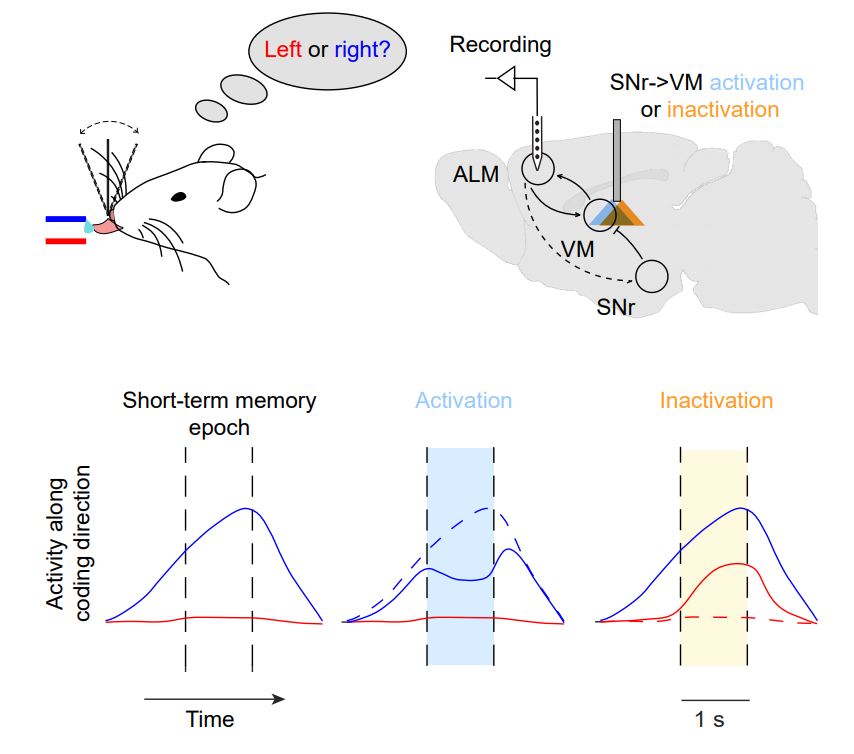Highlights
- The SNr-to-thalamus pathway is causally involved in short-term memory
- Perturbation of the SNr-to-thalamus projection selectively modulates frontal activity
- Selectivity in the SNr is widely distributed but has a hotspot
- Perturbation of the frontal cortex selectively modulates SNr activity
Summary
Persistent activity underlying short-term memory encodes sensory information or instructs specific future movement and, consequently, has a crucial role in cognition. Despite extensive study, how the same set of neurons respond differentially to form selective persistent activity remains unknown. Here, we report that the cortico-basal ganglia-thalamo-cortical (CBTC) circuit supports the formation of selective persistent activity in mice. Optogenetic activation or inactivation of the basal ganglia output nucleus substantia nigra pars reticulata (SNr)-to-thalamus pathway biased future licking choice, without affecting licking execution. This perturbation differentially affected persistent activity in the frontal cortex and selectively modulated neural trajectory that encodes one choice but not the other. Recording showed that SNr neurons had selective persistent activity distributed across SNr, but with a hotspot in the mediolateral region. Optogenetic inactivation of the frontal cortex also differentially affected persistent activity in the SNr. Together, these results reveal a CBTC channel functioning to produce selective persistent activity underlying short-term memory.
Graphical abstract

